Reviews
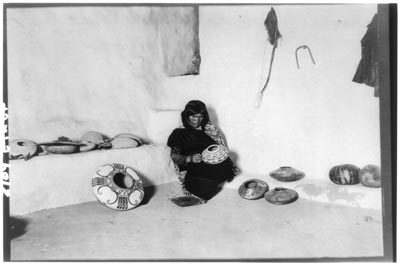
As Reviewed In ATADA News
IN SEARCH OF NAMPEYO:
The Early Years, 1875-1892
Steve Elmore
Review by Billy Schenck
www.atada.org
Steve Elmore’s In Search of Nampeyo, The Early Years, 1875-1892 is an eye opener. Elmore spent twenty years researching and visiting permanent collections around the country looking for and discovering the work of Nampeyo. This book of Elmore’s revelationary work could have been his PhD thesis. He probably would have been thrown out of any doctoral program if he told his advisor in advance that he was going to write his book in the first person. That isn’t done in the academic world, however what an exciting page turner this project turned out to be as a result. The credibility of his research is there in every nook and cranny as well as every page.
Elmore has thoroughly done his research and as a result, discovered incredible facts that fly in the face of conventional wisdom concerning previously held beliefs about Nampeyo and her work. His discoveries present direct challenges to concepts put forward by Wade and LeBlanc. Elmore addresses the two positions in art history in regard to unsigned works, which is really the crux of this entire study.
Read More
The Early Years, 1875-1892
Steve Elmore
Review by Billy Schenck
www.atada.org
Steve Elmore’s In Search of Nampeyo, The Early Years, 1875-1892 is an eye opener. Elmore spent twenty years researching and visiting permanent collections around the country looking for and discovering the work of Nampeyo. This book of Elmore’s revelationary work could have been his PhD thesis. He probably would have been thrown out of any doctoral program if he told his advisor in advance that he was going to write his book in the first person. That isn’t done in the academic world, however what an exciting page turner this project turned out to be as a result. The credibility of his research is there in every nook and cranny as well as every page.
Elmore has thoroughly done his research and as a result, discovered incredible facts that fly in the face of conventional wisdom concerning previously held beliefs about Nampeyo and her work. His discoveries present direct challenges to concepts put forward by Wade and LeBlanc. Elmore addresses the two positions in art history in regard to unsigned works, which is really the crux of this entire study.
Read More
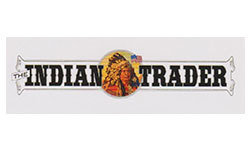
As Reviewed in Indian Trader Magazine
Review by Ron Pecina
Nampeyo, a Hopi-Tewa from First Mesa born in 1856, began as a traditional potter and extended her craft into an art form of pottery identified by her name. Her training in the craft began in her family with the blending of traditional Tewa and Hopi potting techniques. Primary credit for her training goes to her Hopi paternal grandmother. Steve Elmore’s informative book In Search of Nampeyo: The Early Years, 1875-1892 covers her life and work as a potter during the “modernware” and Sikyatki Revival pottery periods. Read More
Nampeyo, a Hopi-Tewa from First Mesa born in 1856, began as a traditional potter and extended her craft into an art form of pottery identified by her name. Her training in the craft began in her family with the blending of traditional Tewa and Hopi potting techniques. Primary credit for her training goes to her Hopi paternal grandmother. Steve Elmore’s informative book In Search of Nampeyo: The Early Years, 1875-1892 covers her life and work as a potter during the “modernware” and Sikyatki Revival pottery periods. Read More
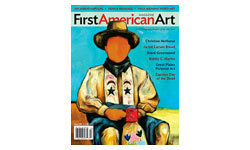
As Reviewed in First American Art Magazine
August 2015
Review by Jean Merz-Edwards
A keen interest in Hopi pottery led collector and gallery owner Steve Elmore to spend the past quarter of a century researching the life and work of the Hopi-Tewa artist Nampeyo (ca. 1856-1942). In his new, self-published monograph, Elmore sets out to document these findings from his studies and subsequently make his contribution to the field of art history. Read More
Review by Jean Merz-Edwards
A keen interest in Hopi pottery led collector and gallery owner Steve Elmore to spend the past quarter of a century researching the life and work of the Hopi-Tewa artist Nampeyo (ca. 1856-1942). In his new, self-published monograph, Elmore sets out to document these findings from his studies and subsequently make his contribution to the field of art history. Read More

As Reviewed in THE Magazine
August 2015
In Search of Nampeyo: The Early Years, 1875-1892 (Spirit Bird Press, $50), which has been awarded the silver medal for non-fiction in the Mountain West division by the 2015 Independent Publisher Book Awards, takes the reader on a journey back to the Hopi potter's artistic roots as evidenced in the collection of British trader Thomas Keam, whose collection is now housed at Harvard University's Peabody Museum. Read More
In Search of Nampeyo: The Early Years, 1875-1892 (Spirit Bird Press, $50), which has been awarded the silver medal for non-fiction in the Mountain West division by the 2015 Independent Publisher Book Awards, takes the reader on a journey back to the Hopi potter's artistic roots as evidenced in the collection of British trader Thomas Keam, whose collection is now housed at Harvard University's Peabody Museum. Read More

As Reviewed in Santa Fean Magazine
August 2015
Review by Whitney Spivey
What do the early works of a master artist look like? That's what Steve Elmore—himself an artist—wanted to know about Hopi potter Nampeyo. After 25 years of research, his findings have been published in his book, In Search of Nampeyo: The Early Years, 1875-1892. Read More
Review by Whitney Spivey
What do the early works of a master artist look like? That's what Steve Elmore—himself an artist—wanted to know about Hopi potter Nampeyo. After 25 years of research, his findings have been published in his book, In Search of Nampeyo: The Early Years, 1875-1892. Read More
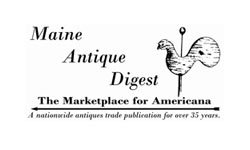
As Reviewed in Maine Antique Digest
March 2015
For 25 years, Steve Elmore of Santa Fe, New Mexico, an artist and dealer in Native American art, has researched the life and work of Hopi-Tewa potter Nampeyo (c. 1856-1942). Elmore has closely examined the Keam collection of Hopi pottery at Harvard University’s Peabody Museum of Archaeology and Ethnology, has studied photographs of Nampeyo and her work, has talked with living potters, including some of Nampeyo’s descendants, and has reviewed historical literature about Nampeyo. Read More
For 25 years, Steve Elmore of Santa Fe, New Mexico, an artist and dealer in Native American art, has researched the life and work of Hopi-Tewa potter Nampeyo (c. 1856-1942). Elmore has closely examined the Keam collection of Hopi pottery at Harvard University’s Peabody Museum of Archaeology and Ethnology, has studied photographs of Nampeyo and her work, has talked with living potters, including some of Nampeyo’s descendants, and has reviewed historical literature about Nampeyo. Read More
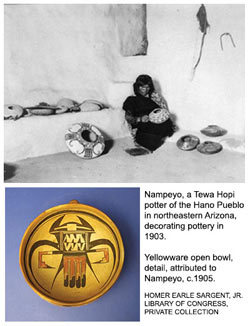
As Reviewed in High Country News
February 2015
Nampeyo was the one of the first Native American artists to be recognized and honored by Euro-Americans. The elegant abstractions of this traditional Hopi potter brought her fame and launched an art movement in the late 19th century. But she rarely signed her work, and much of it was later lost. Read More
Nampeyo was the one of the first Native American artists to be recognized and honored by Euro-Americans. The elegant abstractions of this traditional Hopi potter brought her fame and launched an art movement in the late 19th century. But she rarely signed her work, and much of it was later lost. Read More

